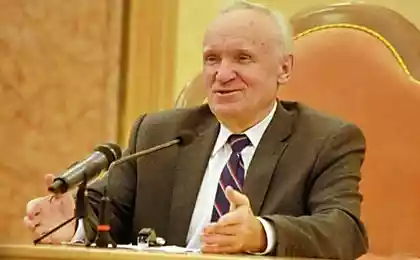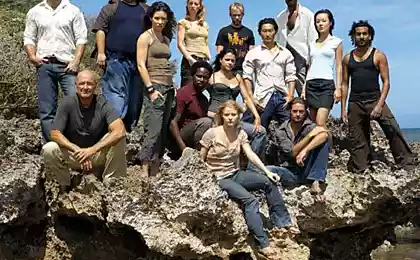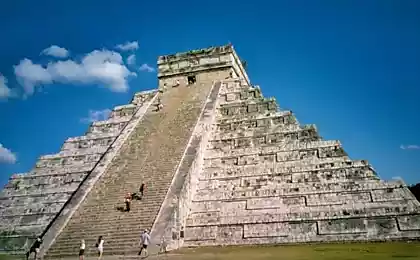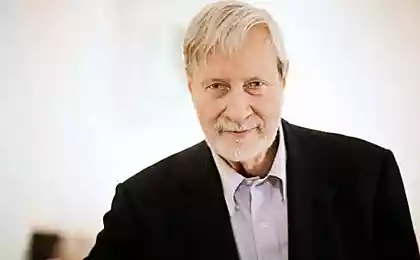528
The whole truth about the Julian calendar and the lost time
How it all began
The Roman Julian calendar was introduced in Rome as a result of reforms implemented at the initiative of Julius Caesar in 46 BC In Kievan Rus the Julian calendar appeared during the reign of Vladimir Svyatoslavovich almost immediately with the beginning of the introduction of Christianity. So, in the "tale of bygone years" is used the Julian calendar with Roman names of the months and the Byzantine era. Chronology led from the creation of the world, based on the 5508 BC Byzantine version of this date. And the beginning of the new year resolved to be calculated from March 1 – in accordance with the ancient Slavic calendar.

Documentarie
Obvious delight innovations the people, to put it mildly, not felt, managing to live by two calendars. Preserved a sufficient number of samples of wooden folk calendars, where you can find simultaneous marking religious holidays according to the Julian calendar, and local events based on pagan folk calendar.
Julian calendar used primarily in cases when you need to know about the date religious holidays. The old calendar based on moon phases, solar cycle and seasons, reported on dates of vital important Affairs, primarily, the beginning or completion of field work. In modern life preserved, such pagan holidays as Carnival, associated with the lunar cycle, or "solar" celebration – Christmas carols and Midsummer.
An attempt is torture
For nearly 500 years, Russia has tried to live according to the Julian calendar. Besides a large number of discrepancies, one issue was the confusion that arose in the annals: Russian chroniclers relied on the Dating of the Slavic calendar and invited the Greeks used the date of the new calendar.
No prohibitions of the old calendar, until the executions are particularly zealous of his adherents, did not help. Reigning Grand Duke of Moscow Ivan III tried to "fix" discrepancies. In the Summer 7000 years from Creation, that is, in 1492, the Moscow Church Council approved the postponement of the start of the year from March 1 to September 1 (solution which is valid in the Russian Orthodox Church to this day).
The shortest year
Another attempt to transform a chronology of the undertaken by Peter I. the decree from 1699 he moved the beginning of the year from 1 September to 1 January. Thus, in 1699 lasted only 4 months: September, October, November and December. Was reduced a year and the Soviet government, which on 24 January, 1918, fixed the error of the Julian calendar, 13 days, introducing the Gregorian calendar, which Catholic Europe had lived since 1582. After January 31, 1918 came not 1 February, and from 14.
Walk everything!
Fearing to be misunderstood once again, Peter attempted to "disguise" the introduction of a new era with Grand festivities. "Imperial city" was ordered to decorate "from the trees and branches of pine, spruce and mozhzhevelovyh" and to arrange fireworks: launch of "rakitov, what will happen" Yes, the firing of cannons, muskets and "inago small guns". On the eve of New year the king personally gave the signal to start the celebrations.
In addition to circuses, Peter proposed to the people "various esty and vats of wine and beer" — the food was arranged in front of the Palace and the three gates. According to the Imperial decree a week walking honest people, and when he came to himself after noisy straightforward way, in Moscow "has risen quite considerable provocation." Many wondered: "How could the king to change the sun for?" Many of those who was firmly convinced that "God created the light in the month of September", is still lived according to the old calendar. Peter decided not forcing people, making the decree the clause: "And Buda who wants to write both the summer, from the creation of the world and Christ, in a row free".
Old style
Today according to the Julian calendar live only four Orthodox churches: Russian, Jerusalem, Georgian and Serbian. Attempt to replace the calendar was undertaken by Patriarch Tikhon on 15 October 1923.However, he lived "new style" in the Church in just 24 days, as it is already November 8, 1923, the Patriarch ordered the "universal and mandatory the introduction of a new style in the Church the use of suspension".
Modern Orthodox ecclesiastical calendar (the Paschal table) consists of two parts: stationary Calendar associated with the solar cycle, and the movable Paschal, based on the Lunar calendar. The Julian calendar, not conforming to the Gregorian in 13 days, is the basis of a fixed part – it includes neperehodimyh Orthodox holidays and days of remembrance of the saints. Paschalia changing annually determines the date of Easter, and with it, and dependent on her passing the holidays. published
Author: Faina Shatrov
P. S. And remember, only by changing their consumption — together we change the world! ©
Join us in Facebook , Vkontakte, Odnoklassniki
Source: russian7.ru/2016/01/vsya-pravda-o-yulianskom-kalendare-i-pot/
The Roman Julian calendar was introduced in Rome as a result of reforms implemented at the initiative of Julius Caesar in 46 BC In Kievan Rus the Julian calendar appeared during the reign of Vladimir Svyatoslavovich almost immediately with the beginning of the introduction of Christianity. So, in the "tale of bygone years" is used the Julian calendar with Roman names of the months and the Byzantine era. Chronology led from the creation of the world, based on the 5508 BC Byzantine version of this date. And the beginning of the new year resolved to be calculated from March 1 – in accordance with the ancient Slavic calendar.

Documentarie
Obvious delight innovations the people, to put it mildly, not felt, managing to live by two calendars. Preserved a sufficient number of samples of wooden folk calendars, where you can find simultaneous marking religious holidays according to the Julian calendar, and local events based on pagan folk calendar.
Julian calendar used primarily in cases when you need to know about the date religious holidays. The old calendar based on moon phases, solar cycle and seasons, reported on dates of vital important Affairs, primarily, the beginning or completion of field work. In modern life preserved, such pagan holidays as Carnival, associated with the lunar cycle, or "solar" celebration – Christmas carols and Midsummer.
An attempt is torture
For nearly 500 years, Russia has tried to live according to the Julian calendar. Besides a large number of discrepancies, one issue was the confusion that arose in the annals: Russian chroniclers relied on the Dating of the Slavic calendar and invited the Greeks used the date of the new calendar.
No prohibitions of the old calendar, until the executions are particularly zealous of his adherents, did not help. Reigning Grand Duke of Moscow Ivan III tried to "fix" discrepancies. In the Summer 7000 years from Creation, that is, in 1492, the Moscow Church Council approved the postponement of the start of the year from March 1 to September 1 (solution which is valid in the Russian Orthodox Church to this day).
The shortest year
Another attempt to transform a chronology of the undertaken by Peter I. the decree from 1699 he moved the beginning of the year from 1 September to 1 January. Thus, in 1699 lasted only 4 months: September, October, November and December. Was reduced a year and the Soviet government, which on 24 January, 1918, fixed the error of the Julian calendar, 13 days, introducing the Gregorian calendar, which Catholic Europe had lived since 1582. After January 31, 1918 came not 1 February, and from 14.
Walk everything!
Fearing to be misunderstood once again, Peter attempted to "disguise" the introduction of a new era with Grand festivities. "Imperial city" was ordered to decorate "from the trees and branches of pine, spruce and mozhzhevelovyh" and to arrange fireworks: launch of "rakitov, what will happen" Yes, the firing of cannons, muskets and "inago small guns". On the eve of New year the king personally gave the signal to start the celebrations.
In addition to circuses, Peter proposed to the people "various esty and vats of wine and beer" — the food was arranged in front of the Palace and the three gates. According to the Imperial decree a week walking honest people, and when he came to himself after noisy straightforward way, in Moscow "has risen quite considerable provocation." Many wondered: "How could the king to change the sun for?" Many of those who was firmly convinced that "God created the light in the month of September", is still lived according to the old calendar. Peter decided not forcing people, making the decree the clause: "And Buda who wants to write both the summer, from the creation of the world and Christ, in a row free".
Old style
Today according to the Julian calendar live only four Orthodox churches: Russian, Jerusalem, Georgian and Serbian. Attempt to replace the calendar was undertaken by Patriarch Tikhon on 15 October 1923.However, he lived "new style" in the Church in just 24 days, as it is already November 8, 1923, the Patriarch ordered the "universal and mandatory the introduction of a new style in the Church the use of suspension".
Modern Orthodox ecclesiastical calendar (the Paschal table) consists of two parts: stationary Calendar associated with the solar cycle, and the movable Paschal, based on the Lunar calendar. The Julian calendar, not conforming to the Gregorian in 13 days, is the basis of a fixed part – it includes neperehodimyh Orthodox holidays and days of remembrance of the saints. Paschalia changing annually determines the date of Easter, and with it, and dependent on her passing the holidays. published
Author: Faina Shatrov
P. S. And remember, only by changing their consumption — together we change the world! ©
Join us in Facebook , Vkontakte, Odnoklassniki
Source: russian7.ru/2016/01/vsya-pravda-o-yulianskom-kalendare-i-pot/
Combined house of gonochoric and straw blocks
The surveillance camera was shot, which are the envy of the wildlife photographers






















